Gin Festival London: How the debauched 'mother's ruin' became Britain's favourite drink
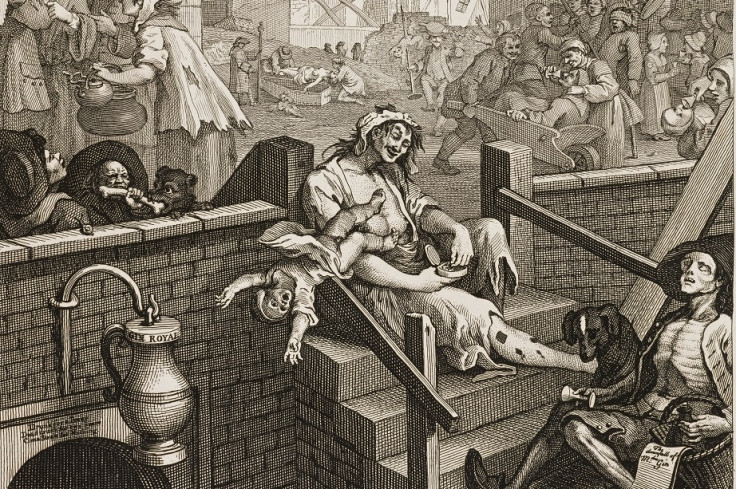
No other image epitomises the horror of Britain's gin consumption in the 18th century more than Hogarth's Gin Lane. The print, issued in 1751 by English artist William Hogarth, shows a drunken woman lying on some stairs with lacerated legs, taking snuff as her baby falls into the gin-vault below. It is in stark contrast with the image of gin today – as a quintessentially middle-class British tipple.
Ahead of the Gin Festival London, a weekend's celebration of the hugely popular spirit, IBT explores Britain's complicated history with gin and its association with social decay, crime and even death.
Gin had its origins abroad. In the early 17th century Holland, gin – genever – was being produced as a medicine and sold in chemists to treat stomach ailments, gallstones and gout – but to make it more palatable, the Dutch started to flavour it with juniper. When Dutch William of Orange arrived to rule Britain in 1688, he relaxed laws on spirit-making. Anyone could distil by simply posting a notice in public and waiting 10 days.
While the rich imported their alcohol, the poor improvised with imitation "gin" on the back streets – using turpentine and sulphuric acid to replicate the sensation of drinking gin. Distilling gin was inexpensive because of the low corn prices, so much so that by 1750 nearly half of all British wheat harvests went straight into gin production. The end product was cheap, strong and popular among the poor as a quick release from the misery of everyday life, at a time when poverty and disease were rife.
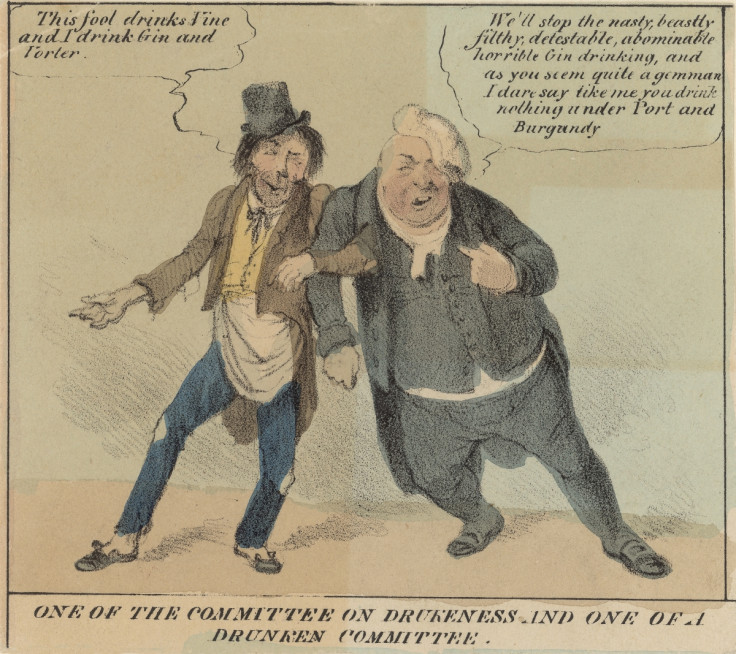
Despite the introduction of legislation in 1729 to tackle the problem, it only impacted the sales and production of good gin – and did nothing to curb the consumption of bad spirits. Stories of robbery and murder began to circulate, including the case of William Burroughs, who was charged with assault and robbery in 1731. "He drove hackney coaches, and by that means fell into that dreadful society of gin-drinkers, whores, thieves. house-breakers, street-robbers, pick-pockets, and the whole train of the most notable black guards in and about London."
Perhaps one of the most shocking cases was that of Judith Defour, who was convicted in 1734 of removing her daughter from the workhouse and strangling her in order to sell her clothes for gin money. Defour, who confessed to the heinous crime, was eventually hanged.
Gin was particularly popular with women. Ale houses were dominated by men, but women drank, sold and produced the spirit – hence Hogarth's image of the drunk woman lying on the stairs on Gin Lane, set in the London slum of St Giles. The drink that had gained the nickname "ladies delight" turned into "mother's ruin" and gained associations with backstreet abortions and abandoned children. Gin, the new opium, was threatening to rip apart the social fabric of Britain. It gained a reputation of excess, vice and misery.
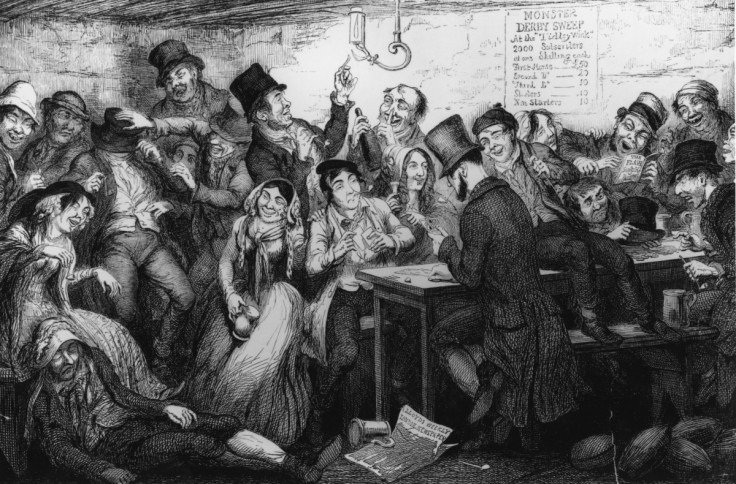
Once again, legislators unsuccessfully tried to tackle the problem by introducing The Gin Act in September 1736. It made gin prohibitively expensive to the lower classes, both by raising the tax on gin itself and making licensing fee prohibitively expensive. The act was opposed by Sir Robert Walpole and Dr Samuel Johnson, who – rightly – believed the law would lead to rioting. Protests broke out as predicted, and the law was mostly ignored.
Six years after the Gin Act was instigated, only two distillers took out licences – but gin production doubled. Trade of the drink was driven underground, and loopholes were exploited to avoid the taxed – including selling gin under pseudonyms such as bob, cuckold's delight and Parliament gin. One estimate suggests England was drinking 10 litres of gin per person per year in 1743.
The Gin Act was repealed in 1742 and replaced with a new policy, bringing in reasonably high prices, excise duties and licenced retailers under the supervision of magistrates. Unlike the previous acts, the changes led to respectable firms distilling and selling gin – founding the gin we drink today.
So-called gin palaces sprung up in the 1830s as the trade battle began between gin and beer shops. Following the 1820 "Beerhouse Act", beer was sold free of licensing control and beer shops appeared in the hundreds. Gin palaces were an escape for gin-drinkers, most of whom were England's poor. There were around 5,000 in London alone and provided a place to drink cheap gin.
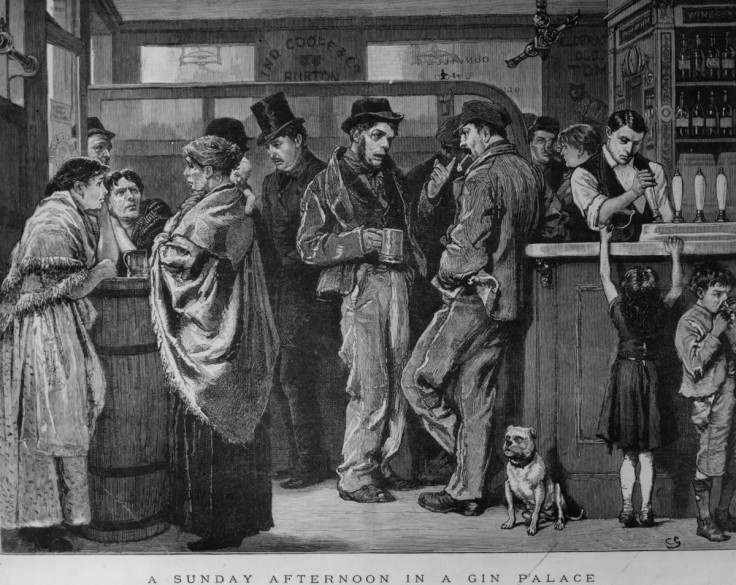
The 19th century gave rise to a style of gin known as Old Tom Gin, which was slightly sweeter in taste as it was laced with liquorice and sugar. It became less popular after the invention of the column still in the 1820s, which made the distillation of the spirit practical. This led to the creation of the London Dry gin. By the mid-19th century, London's Clerkenwell area was a hotspot for distilleries like Tanqueray, Nicholson's and Booth's.
By the 1940s, British citizens and soldiers in India were using quinine – a medicine found in the bark of the cinchona tree – to treat and prevent malaria. It was so bitter that people started mixing the powder with soda and sugar to create a form of tonic water. In 1870, Schweppes introduced an Indian Quinine Tonic aimed at the overseas British. From its origins among the impoverished in Britain and associations with social decay, gin was becoming the respectable drink it is known as today. As with many drinks, the gin and tonic began with medicinal intentions.
Back in London, a French chef was paving the way for mixed drinks. Alexis Benoit Soyer created cocktails, shots and more at his Universal Symposium of All Nations, a restaurant opposite the Great Exhibition in Hyde Park. Despite the popularity of his cocktails and food, Soyer was forced to close his restaurant with thousands of pounds of debt.
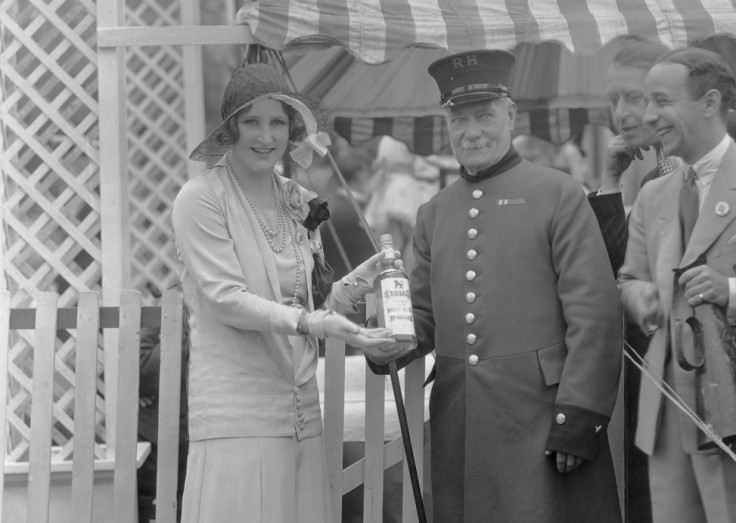
In the 1920s, gin became a common base spirit for many mixed drinks, including the martini – which first appeared towards the end of the last century. Popular among London's socialites and Bright Young Things, gin-fuelled parties shifted sales of the drink.
"Flappers, martinis and jazz. Gin was an essential part of the roaring twenties, of freedom, good times and good drinks," says Jym Harris, co-founder of the Gin Festival. "London Dry Gin was the darling of the cocktail world at a time when cocktails, or mixed drinks, were the only thing to drink. Short and boozy, the idea was to showcase each spirit rather than mask with fruit and sugar. Thanks to the invention of the column still, gin was cleaner and of a higher quality but most of all, it was dry and bitter, perfect for mixing with vermouth or a good tonic."
Prohibition brought about a different story in the States, however. The term "bathtub gin" referred to any homemade spirit brewed in amateur conditions – and sales of poor-quality alcohol soared.
During the Second World War, Winston Churchill and his cabinet were partial to dry martinis. Although Churchill liked Plymouth gin, he was not a fan of vermouth, however. He once remarked: "I would like to observe the vermouth from across the room while I drink my martini."
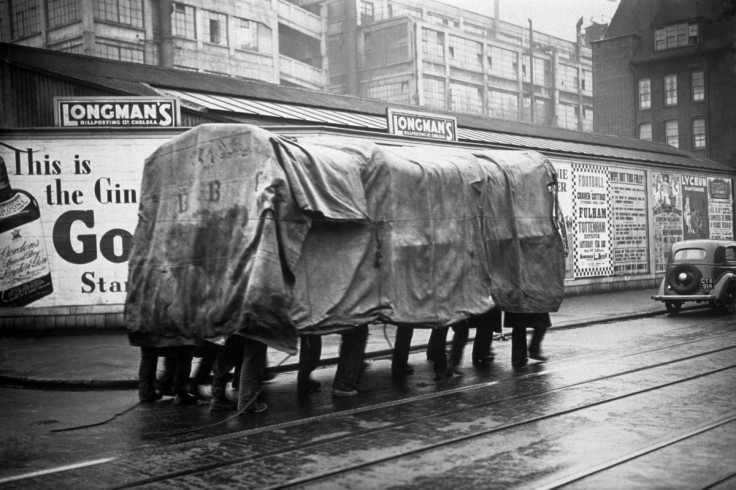
In the 1960s, gin began to lose popularity to a new spirit – vodka. The youth of the era turned their attention to vodka cocktails as vodka companies used flashy advertising to attract drinkers in the swinging sixties. Thanks to new independent distillers like Hendrick's, gin has made a comeback and is once again hugely popular – although not to the extent of the 18th century, thankfully.
"Freed from old fashioned ideas about how gin should taste and full of innovative designs for our palates, those in the gin craft are pushing the boundaries of the spirit to produce the most enticing drinks that they can," Harris says.
"There are dedicated gin bars who have perfected the art of a gin tonic and a good Martinez, long forgotten recipes have been recreated and incredible, new gins are born on a daily basis. Gin Festival is proud to be a part of this second gin craze, driven by quality over quantity."
The popularity of gin can be seen in the huge numbers of drinkers who attend the various Gin Festivals held the UK. Gin Festival London, from Friday 19 February until Sunday 21 February, is the largest of its kind worldwide. Visit Ginfestival.com for more information.

© Copyright IBTimes 2024. All rights reserved.







